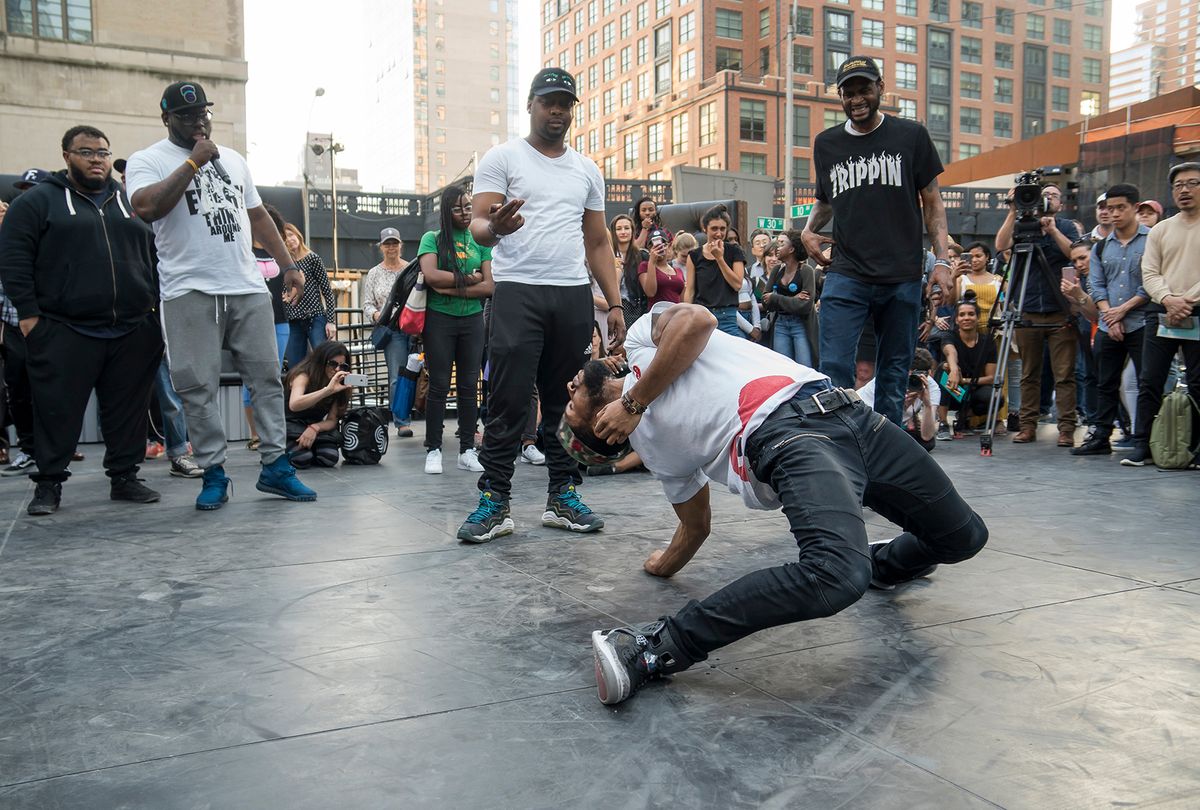New York has its own Death Valley. It’s the alienating corridor of Tenth Avenue in the West 30s, where the overbearing construction sites of Hudson Yards and other nearby developments are sucking the life out of the waterfront between Chelsea and Hell’s Kitchen.
For two weeks, temporary respite is available on a miraculously undeveloped lot at the corner of Tenth Avenue and 31st Street. Here, within the moveable walls of a cleverly adjustable structure designed by the architect Kunlé Adeyemi and the artist Tino Sehgal, adventurous pedestrians and wannabe “flexn” street dancers can immerse themselves in a programme of music, dance and talks that is literally a utopian breath of fresh air.
A Prelude to the Shed (until 13 May) is also a foretaste of things to come next year at the Shed, the new multi-disciplinary cultural center designed by Diller, Scofidio + Renfro (in collaboration with Rockwell Group) currently taking shape a block away, the lone exception to the otherwise suffocating banalities in Hudson Yards.
“This was a huge opportunity to introduce the Shed to New York,” says Alex Poots, its artistic director and CEO. Aside from its commissioned visual art and pop culture programmes—selected by Poots and the senior advisor Hans Ulrich Obrist—the privately funded space’s activities include student outreach dance classes and an open call for projects by young artists.

The structure for A Prelude to The Shed, designed by architect Kunlé Adeymi of NLÉ Works Photo: Stephanie Berger/The Shed
When I arrived for its 1 May afternoon premiere , the walls (to which comfy banquette seating is attached) were partly open to the street and Abra, the young, Atlanta-based R&B singer, was wailing away for an audience that included performers from Sehgal’s This Variation, the percussive choral work he introduced in 2012 for Documenta 13 and adapted—to captivating effect—for this situation.
As Abra finished her set, two dazzling dancers in the crowd rose to perform Pas de Deux Cent Douze, by the choreographer William Forsythe, to music by Azealia Banks. As the music trailed off, stagehands closed up the walls, plunging the platform into complete darkness, signaling the human beat boxes in Sehgal’s work to start. For spectators, the experience was like playing an extra in a movie shot in a single, fluid take, each marvelous scene and sound dissolving into the next. At the day’s end came the first of the panels arranged by the art theorist, writer and teacher Dorothea von Hantelmann.

Atlanta-based R&B singer Abra performing at A Prelude to The Shed Photo: Stephanie Berger/The Shed
It was devoted to the life and work of Cedric Price, whose unrealised Fun Palace inspired the architects of both the Shed and its prelude. Price had also entered a competition for the development of Hudson Yards—decades ago. The idea was to leave it open as a park, with conduits designed to bring fresh air to Manhattan.
This programme—free to all who reserve online—does that, with a large dose of the pleasure that Price felt was essential for human health. I hope the property developers get the message.


